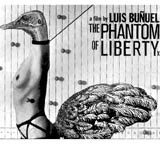Demons in the detail
An exhibition of graphic artist Andrzej Klimowski’s works is due to take place at the National Theatre. Nick Smurthwaite took an advanced look

Terry Gilliam meets Salvador Dali in the startling graphics of Andrzej Klimowski. For a quarter of a century, his sexy photomontages of demons, angels and scantily clad women – sometimes all mixed together – have adorned book jackets, theatre programmes, film posters and newspaper articles. The bold, visceral, sometimes menacing nature of his images have endeared him to the intelligentsia. Harold Pinter says he leads the field by ‘a very long furlong, out on his own, making his own weather you’ll never catch him’.
He was born in London, the son of Polish immigrants, in 1949. After studying painting, sculpture and graphic art at St Martin’s College of Art and Design, he took himself off to Warsaw to learn poster design and film animation from two Polish masters. Klimowski lived and worked in Poland until 1980, becoming a leading exponent of what came to be called the Polish school of poster design, characterised by the imaginative use of photomontage.
On returning to London, he continued to work as a graphic artist, and took up teaching. For many years he has been head of illustration at the Royal College of Art. One of his most striking film posters – for the 1981 art film The Phantom of Liberty – had the distinction of being banned by London Underground, presumably on the grounds that it was obscene or demeaning to women. It shows a naked female torso (that of his wife), with the head and tail feathers of an ostrich.
His object is always to ‘tease the viewer’s imagination’ and create a feeling of tension and uncertainty in the onlooker. ‘Images without tension are purely decorative or formal,’ he says. He likens the process of creating a photomontage to sculpture. ‘It’s a question of amassing and then taking away, like working with clay. The best pictures are the ones that are very direct and straight to the point. Photographs as well as films are loaded with documentary information. They are the products of illusions. The photomontage or collage lies somewhere in between.’
Klimowski’s determination to challenge the viewer, rather than merely to serve a text or film, is perhaps what singles him out from his peers. ‘The image is more ambiguous than the word,’ he says. ‘Storytelling through pictures leaves the audience with a great deal of work to do. They have to complete the work through their own imaginations. My greatest fear is the onset of monotony and repetition.’
The recurrence of angels and demons in Klimowski’s pictures, not to mention the depiction of naked women as angels, is entirely due to his Polish cultural ancestry. In Poland, he says, angels are part of everyday life. For Klimowski, the tangible and the surreal find no problem being compatible. In recent years, Klimowski has sought to simplify his imagery, working in linocut and brush and ink, producing sparse pictures in black and white. The exhibition offers a fascinating retrospective of this important graphic artist, from the earlier surreal and enigmatic photomontage through to the leaner simplification of more recent times.
An exhibition of the graphic designs of Andrzej Klimowski will be at the National Theatre, London SE1 from 13 December to 6 February 2002. Admission is free
-
Post a comment



